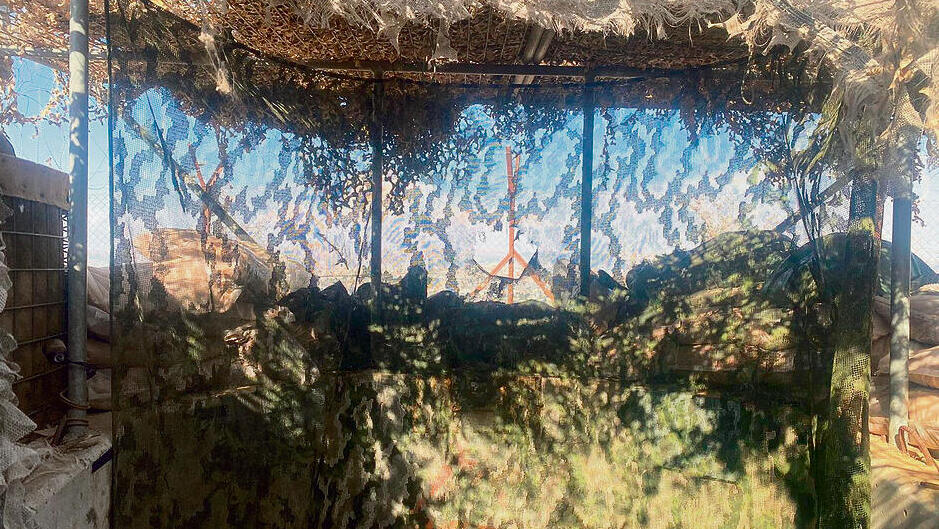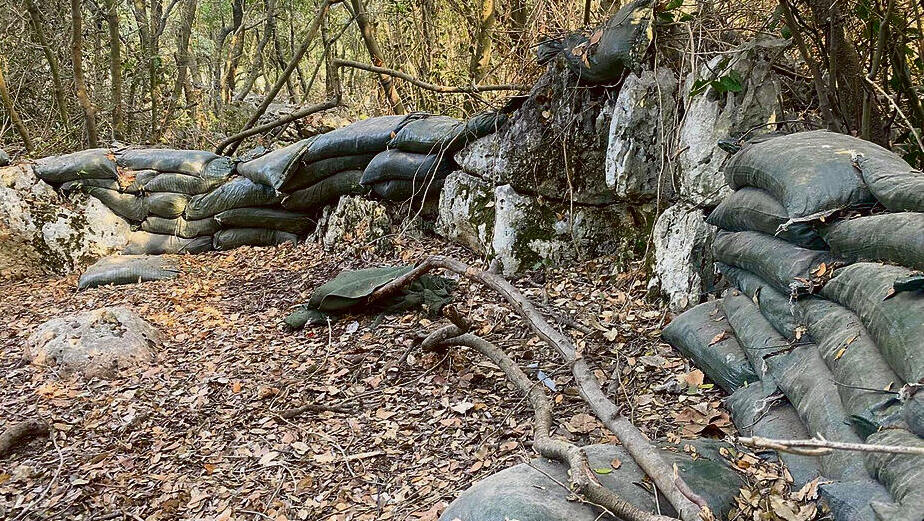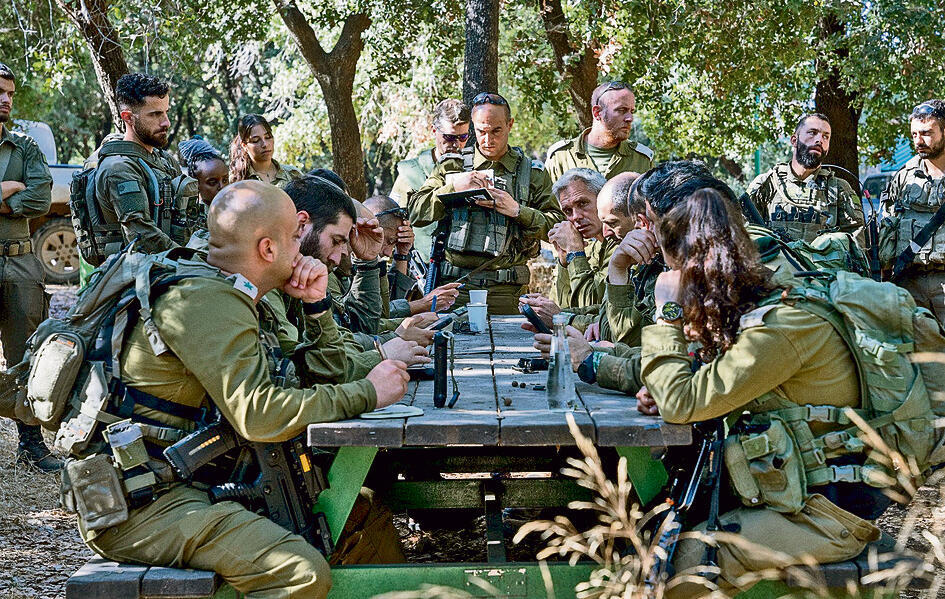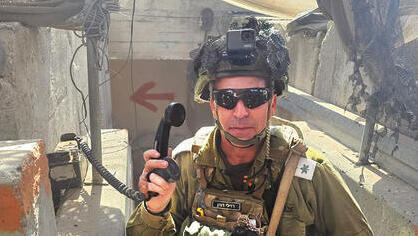the IDF has begun to reinforce its outposts and bases along the Lebanon border amid the war in Gaza and ongoing tensions on the northern border as the threat of war increases.
Defense Minister Yoav Gallant told his American counterpart Lloy Austin in an overnight call, that the window for a diplomatic solution that would ensure the safe return of residents of the north to their homes and the removal of the terrorists from the border, is closing. U.S. special envoy to the Middle East Amos Hochstein landed in Israel on Monday for meetings with Prime Gallant and Prime Minister Benjamin Netanyahu.
Soldiers were leaving their positions and transitioning to areas reinforced by sandbag barriers and improving their firing positions overlooking Lebanese villages. The combat doctrine recently implemented along the northern border has many parallels to the tactics used by the military during times of cross-border conflicts starting in 1985 and lasting until the IDF's withdrawal from Lebanon in 2000.
Soldiers were now piling up sandbags, repairing those damaged in Hezbollah attacks from the past 24 hours, stretching out more camouflage nets to protect against drones and practicing running through the reinforced combat trenches.
Unlike the previous war in Lebanon in 2006, these combat positions were not always manned by soldiers and were monitored by advanced surveillance technology, to avoid injury from Hezbollah's precise missiles, anti-tank missiles and strike drones.
Lieutenant Colonel (res.) Dotan Razili from Kibbutz Eilon still remembers his service in outposts in southern Lebanon. After leaving his family on October 7 he reported to his division as its combat director. Within days, Razili understood that it was time to bring back all the forgotten combat doctrines and the old equipment gathering dust in the warehouses because in this new battle, the IDF's "trench army" needed to retrain and be prepared for any eventuality.
"When reinforcements arrived here, I obtained copies of an infantry platoon manual from 1956 and we relearned how to build trenches and combat tunnels — it became an instant hit," Razili said.
In one of the most frequently attacked outposts in the western sector of the border, the tensions are high. "On one hand, you see well-constructed combat trenches, sandbags, and camouflage nets and on the other hand, a sleek espresso machine in the administrative area."
Alongside communication rooms with drone operators and technological observation equipment, there are also ammunition depots. "The cavalry is collaborating with the high-tech corps out here," Razili described. According to him, the reality along the border feels even more reminiscent of past periods.
A senior military officer explained that the IDF's conceptual shift in defending the northern communities is also apparent outside the outposts. "We've resumed long ambushes in the field, we've gone back to infantry platoons stationed behind sandbagged positions — the units in the field are spread out like scenes from movies on the Vietnam War."
4 View gallery


Israeli position on the border with Lebanon covered by a camouflage net
(Photo: IDF Spokesperson's Unit)
When Hezbollah's assault began in October, Razili brought equipment from the command's warehouses that no one imagined would be utilized again. Along the trenches between the combat posts and the command center, he and soldiers from the military's communication units installed nearly 50-year-old point-to-point radios. "The enemy can't tap into these; the lines are stable and clear."
The units on the border are aware of the Israeli public's diminishing trust in the IDF and government after almost a year of daily rocket fire on northern communities.
Homes in Shi'ite villages across the border in Lebanon were clearly visible from the IDF's positions. Many of them that had been used for terrorist activities were destroyed, as was one of Hezbollah's outposts built near the border in recent years.
"We're making their lives miserable and causing the enemy to lose as many assets and people as possible," the senior IDF commander said. 'We are pushing them away from the border to make it clear that anyone who gets close dies." He said he was well aware that the residents under his protection were not comforted by the sight of destruction on the other side or by the number of terrorists eliminated.
"Besides our defensive mission, we're winding the forces up like a coiled spring daily, waiting for the top brass to give us the green light to release it and change the equation along the border so that we can allow residents to return home," he said.
The officer acknowledged that Israel needs to replicate in the north what it had done in its assault on Gaza in the south, to achieve long-term security. "The other side understands this too, which is why they're being cautious with us."
Meanwhile, Israel continues to send threatening messages to Hezbollah and Lebanon, while also seeking a diplomatic agreement to prevent the need for an all-out war. However, communities under Hezbollah attack would likely not accept any diplomatic agreement and expect the Lebanese threat to be removed completely.






